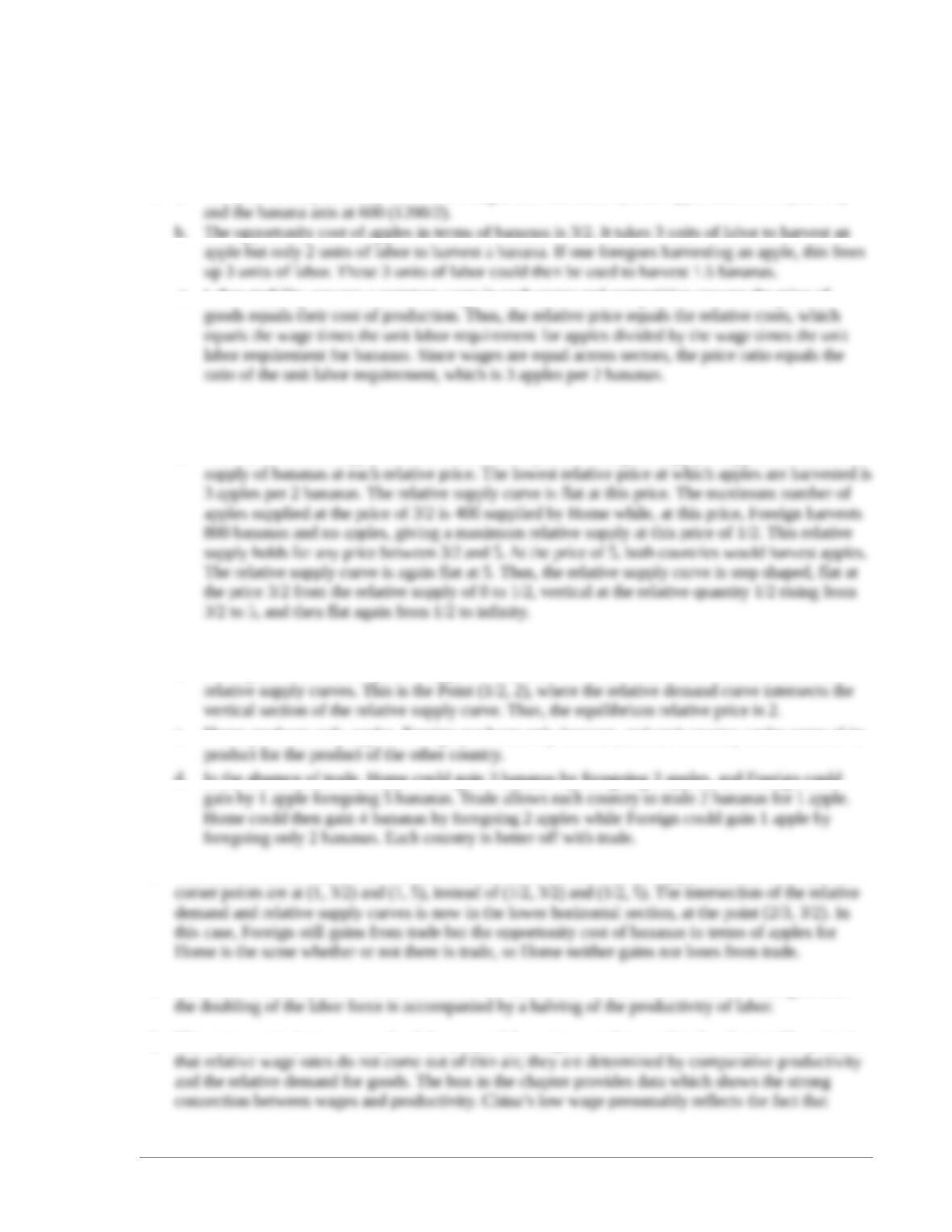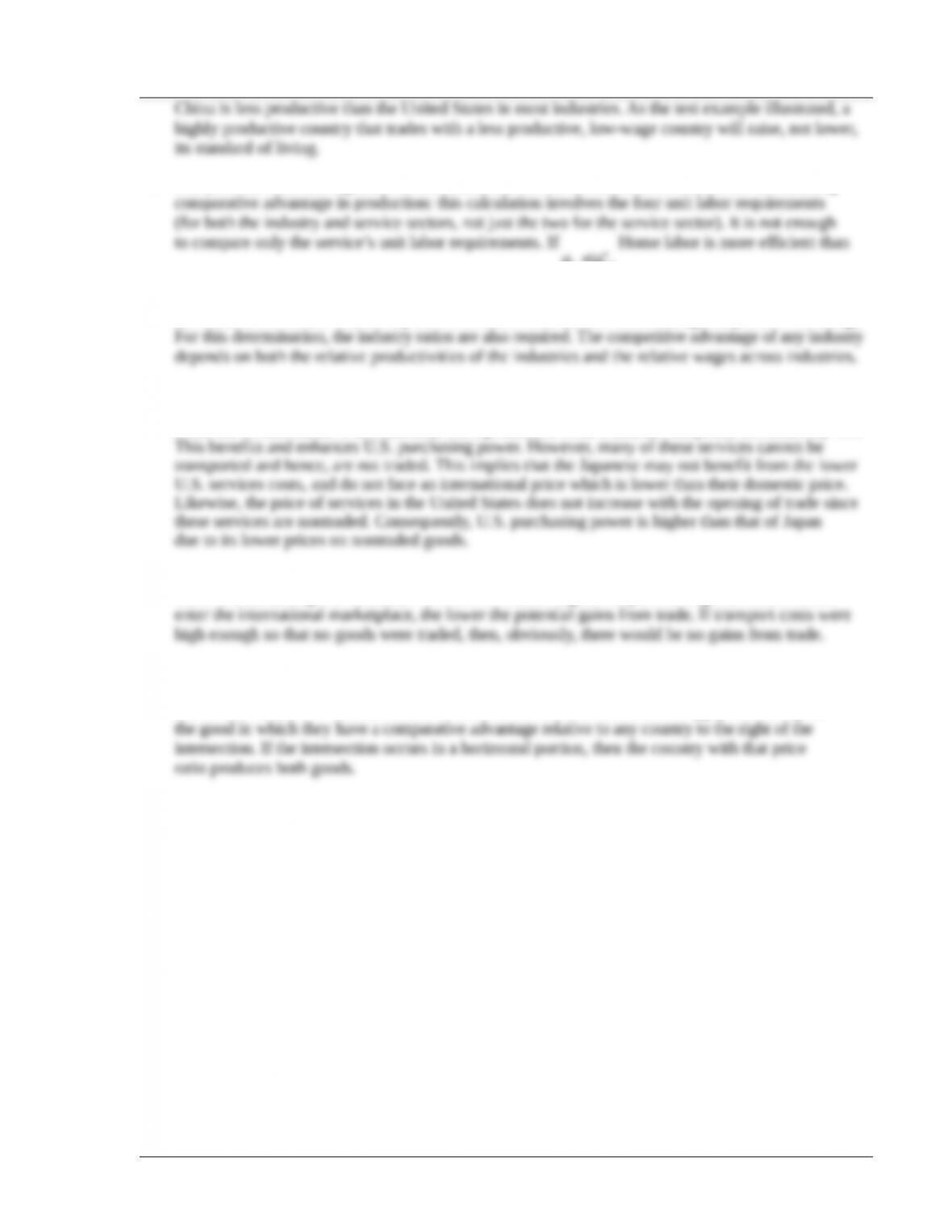Answers to Textbook Problems
1. a. The production possibility curve is a straight line that intercepts the apple axis at 400 (1200/3)
b. The opportunity cost of apples in terms of bananas is 3/2. It takes 3 units of labor to harvest an
c. Labor mobility ensures a common wage in each sector and competition ensures the price of
2. a. The production possibility curve is linear, with the intercept on the apple axis equal to 160 (800/5)
and the intercept on the banana axis equal to 800 (800/1).
b. The world relative supply curve is constructed by determining the supply of apples relative to the
3. a. The relative demand curve includes the Points (1/5, 5), (1/2, 2), (1, 1), (2, 1/2).
b. The equilibrium relative price of apples is found at the intersection of the relative demand and
c. Home produces only apples, Foreign produces only bananas, and each country trades some of its
d. In the absence of trade, Home could gain 3 bananas by foregoing 2 apples, and Foreign could
4. The increase in the number of workers at Home shifts out the relative supply schedule such that the
5. This answer is identical to that in Answer 3. The amount of “effective labor” has not changed since
6. This statement is just an example of the pauper labor argument discussed in the chapter. The point is
© 2012 Pearson Education, Inc. Publishing as Addison-Wesley



